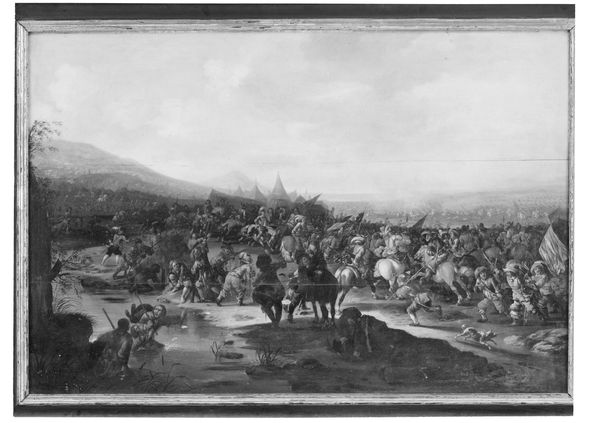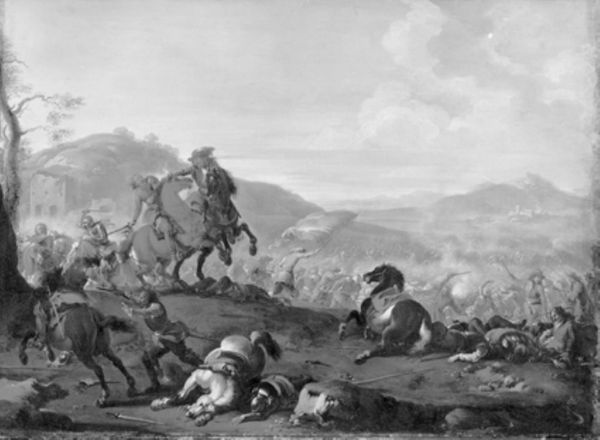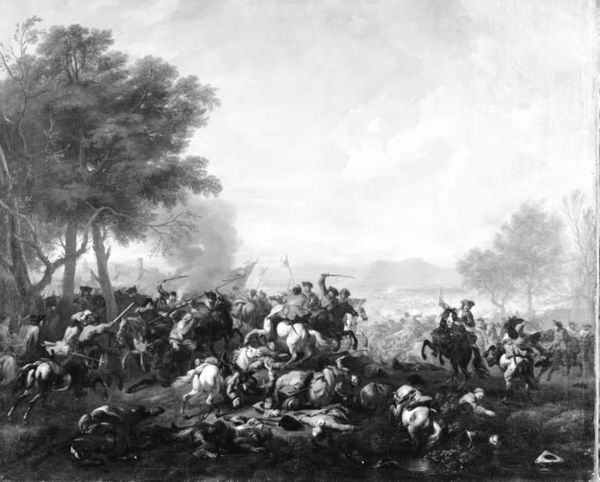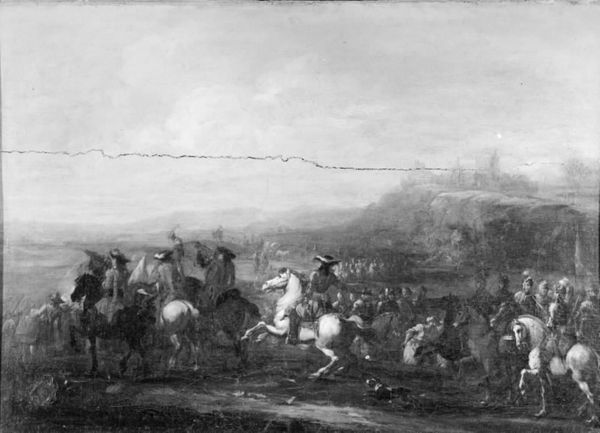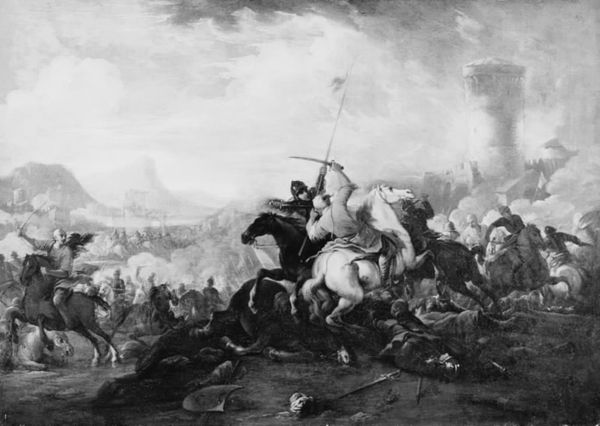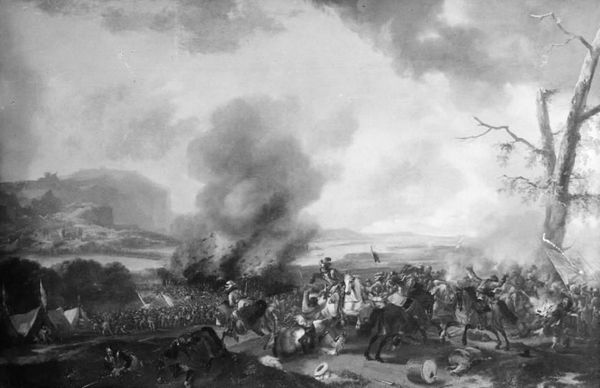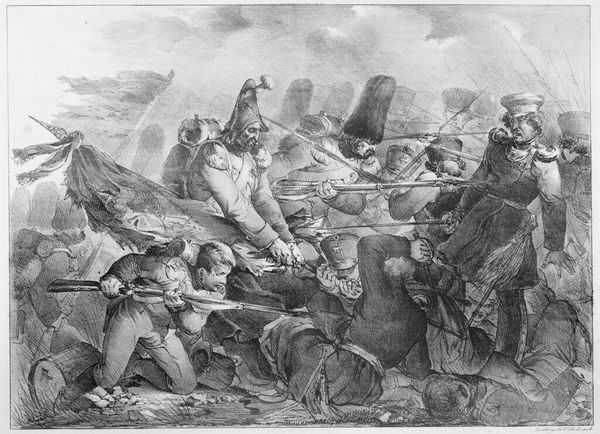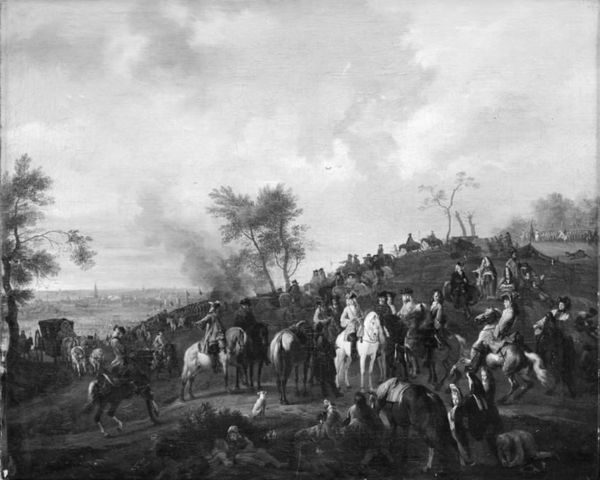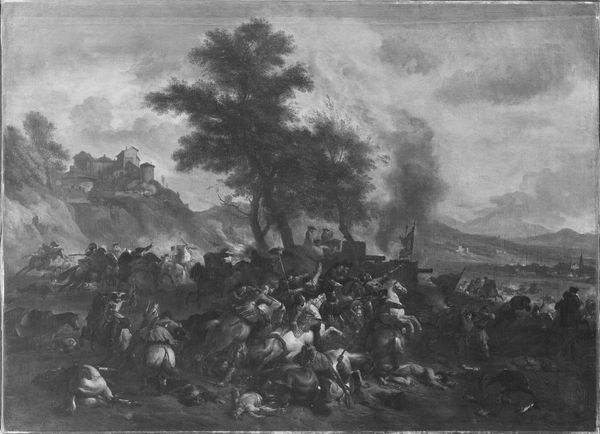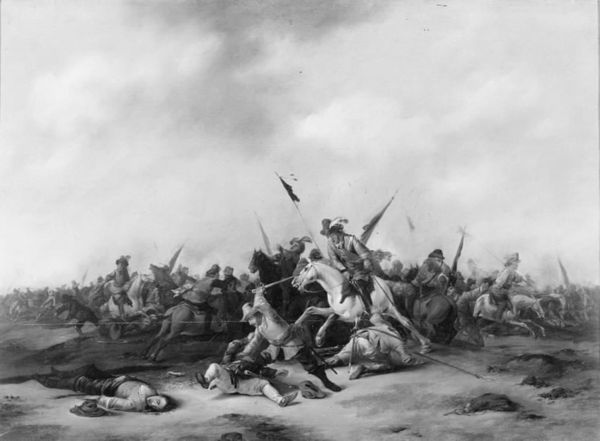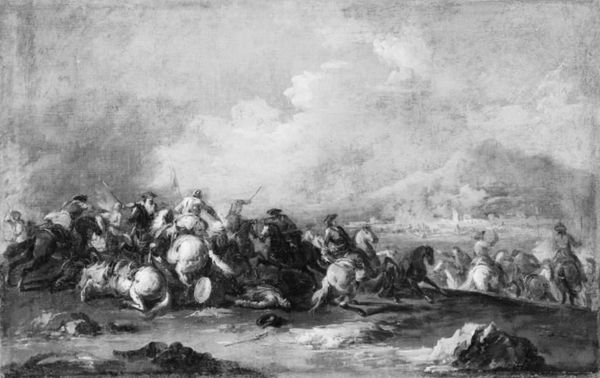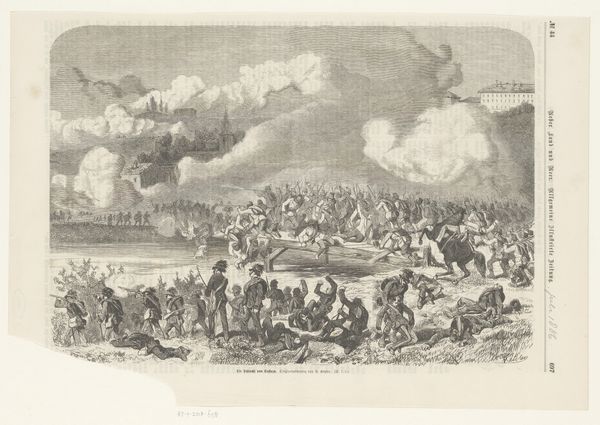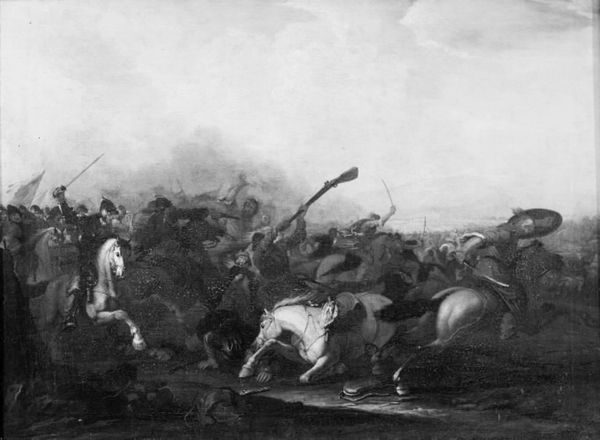
painting, oil-paint, canvas
#
narrative-art
#
painting
#
oil-paint
#
landscape
#
canvas
#
black and white
#
monochrome photography
#
history-painting
#
academic-art
#
monochrome
#
charcoal
#
realism
#
monochrome
Dimensions: 211 cm (height) x 310 cm (width) (Netto)
Editor: This painting, "The Battle of Isted, 25 July 1850" by Niels Simonsen, created in 1854 using oil paint on canvas, strikes me as incredibly intense. The sheer number of figures engaged in combat is overwhelming. What can you tell me about the history surrounding this artwork? Curator: This work depicts a pivotal moment in the First Schleswig War. The battle itself became deeply intertwined with Danish national identity, particularly as it occurred during a period of heightened nationalism and nation-building in 19th-century Europe. The scale and dramatic presentation serve a clear purpose, wouldn’t you agree? Editor: Absolutely. I see how it's trying to instill a sense of national pride and glorify warfare. Was the intention to inspire patriotism at the time? Curator: Precisely. These battle paintings were often commissioned by the state or wealthy patrons and then displayed in public venues, or reproduced as prints. That way, images were strategically deployed to shape public opinion, foster national unity, and legitimize political power. Think about the influence these images could have on shaping cultural memory and solidifying national myths. Editor: So, beyond the glorification, is it also offering a commentary on power structures? Curator: The artist, Simonsen, plays a vital role. His choices, whether conscious or not, reflect and reinforce the dominant ideology. Ask yourself, whose story is being told here and who is being silenced or marginalized? Do you see anything in the imagery that helps answer these questions? Editor: That's a lot to unpack, but I can definitely see now how this artwork acted as a potent tool for political messaging. I had just been looking at it as a dramatic representation. Curator: Understanding the socio-political climate, especially the role of art institutions in shaping public opinion, really transforms how we view such works, doesn't it?
Comments
No comments
Be the first to comment and join the conversation on the ultimate creative platform.
